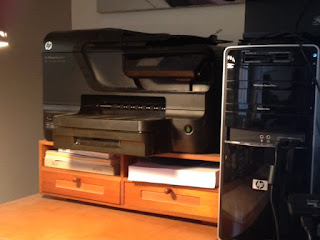Today I decided to research Mabel Hiltz Buehring’s family a
little more. Mabel is my great-father’s sibling. I decided to research her
after visiting the Winnebago Court House in Oshkosh, Wisconsin yesterday while researching my husband's family. I decided to looked up Mabel’s daughter, Mildred’s death information because I realized I
never recorded this information. Since I had photographed her grave last year
I wanted to complete the process.
As I was inputting the daughter’s information into my genealogy
software package, I realized I did not have death information on Mabel or her
husband, William George. I decided to see if I could find anything on the
family and proceeded to use FindAGrave.
FindAGrave not only had her grave information but her husband
and another daughter, Mabel. This blew my mind. I didn’t know she had a fourth
child. However, I must have known, because lo and behold there she was in my
genealogy software package. This was a still an exciting find.
I had found her via the 1911 Canadian Census record and
recorded this information previously. Looking at this little family group, I
realized I had more missing information then known facts.
After recording the FindAGrave information which was
recently added as of late fall last year, I proceeded to look for the family in
additional Canadian Census records via Ancestry.com. This became quite
difficult for some reason. Typing in the family name of Buehring, Behring,
Buhring, was producing no good results or way too many results. Typing in the
family unit’s first names only wasn’t providing the results I wanted either.
I decided to try FamilySearch and found the family in the
1916 census; however FamilySearch did not have an image or a link to the image
on Ancestry. Taking the information I found on FamilySearch.
I moved back to Ancestry and used their search – Census and
Voter lists function to narrow down my search category to Canadian census
Collection, 1851-1916. After which I was able to open a window for each the
1916 and 1921 Census of Canada.
I decided to browse this collection and had to specify the
Province, District and Sub-district based on my FamilySearch results.
I then proceeded to page 8 and found my family on that page.
After recording the census fact for each family member, I
needed to find them in the 1921 Census. I decided I was going to try the same
location as the 1916 census.
This time, it appears that Township 27 is in Sub-District 8
and not 7. Plus I don’t have the advantage of know what page number, but I
figure if there were not many images, I would page through them.
However, this wasn’t as easy as I had hoped. The image order
didn’t seem to match what I was hoping to find. Even though my previous attempt of using Ancestry.com didn't produce the desire results, I decided to use only the family first names and the age of the head of household along with Exact set for both his birth date and place in the search box
for the 1921 census as follows:
I stuck gold when I found them on the first page of hits of
215 matches.
Now I saw the problem in the transcription of the last
name. It was transcribed as Buckring instead of Buehring. I never thought of
that misspelling before, I made a note that perhaps if I used Bu??ring for my
searches might help find them in the future.
I still haven’t found Mabel’s two sons’ death dates but a
little more research found that each had finally married and Paul’s wife’s name
is Effie and George’s wife’s name is Martha. Paul was married prior to a 1945
Voter registration list and George was married between 1953 and 1962, because
in 1953 he has no wife but in 1962 he has a wife.
However at this time, I am unable to find anything new on
the two remaining sons and decided this was a good time to break from this
little family research project.






















